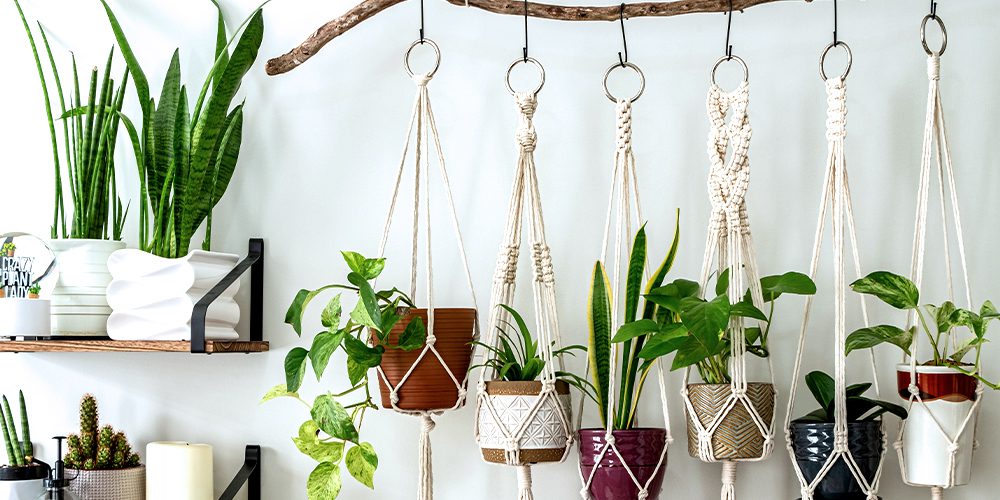So you’ve mastered the basics of light and water. You’ve even swabbed away a few houseplant pests. Now you’re wondering how to step up your indoor plant care. Here’s a guide to repotting, fertilizing, pruning, and propagating, as well as some extra tips on watering!
At the end of the day, indoor plant care is as much of an art as a science. It’s not just about keeping the plants alive but of growing and arranging plants that will please you.
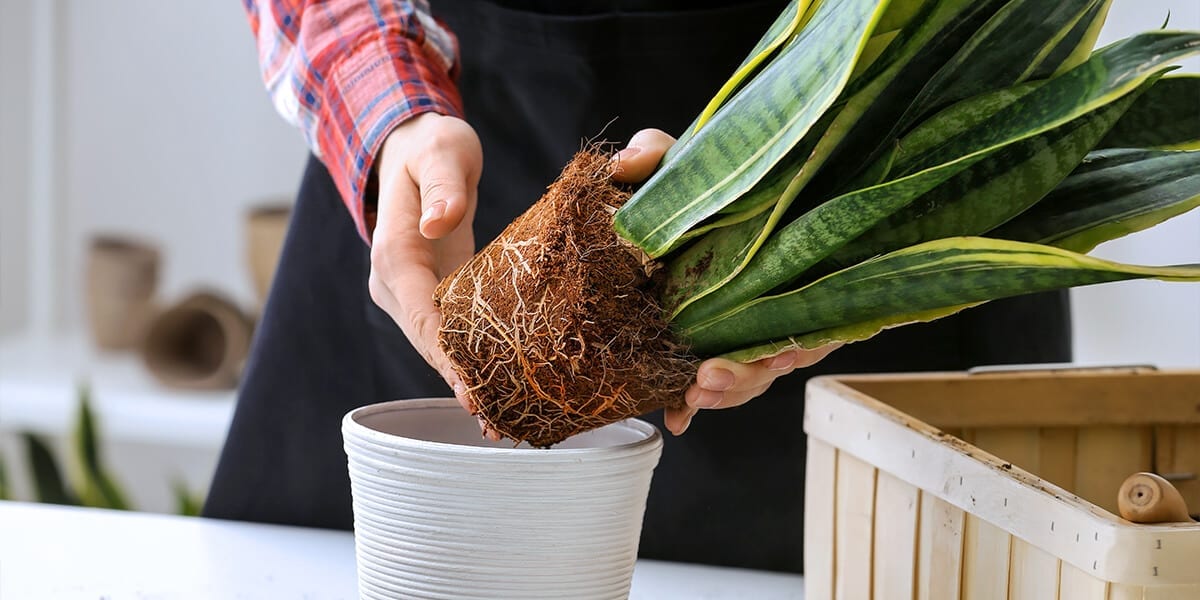
Repotting
Houseplants have a unique challenge that most outdoor plants don’t have: their roots are confined to a pot. When they start to overgrow the tight space, or when the foliage gets so heavy that they begin to tip over, it may be time to give them more room. Wondering how to repot? The main rules are to size up slowly and give the plant proper soil. Usually, a pot 1-2 inches larger in diameter is a good choice. A pot that’s too big will make proper watering a challenge. Early spring and late fall are both ideal times for repotting.
Fertilizing
Knowing when to fertilize can be a challenge of indoor plant care, as it depends on the plant’s growth rate, time of year, and what’s already in the soil. You usually don’t need to fertilize until you’ve had the plant for a year. Often, it’s better to use less than more, as over-fertilizing can burn their roots and stunt their growth. Many houseplants go dormant in the winter and only need fertilizing in the spring and summer.
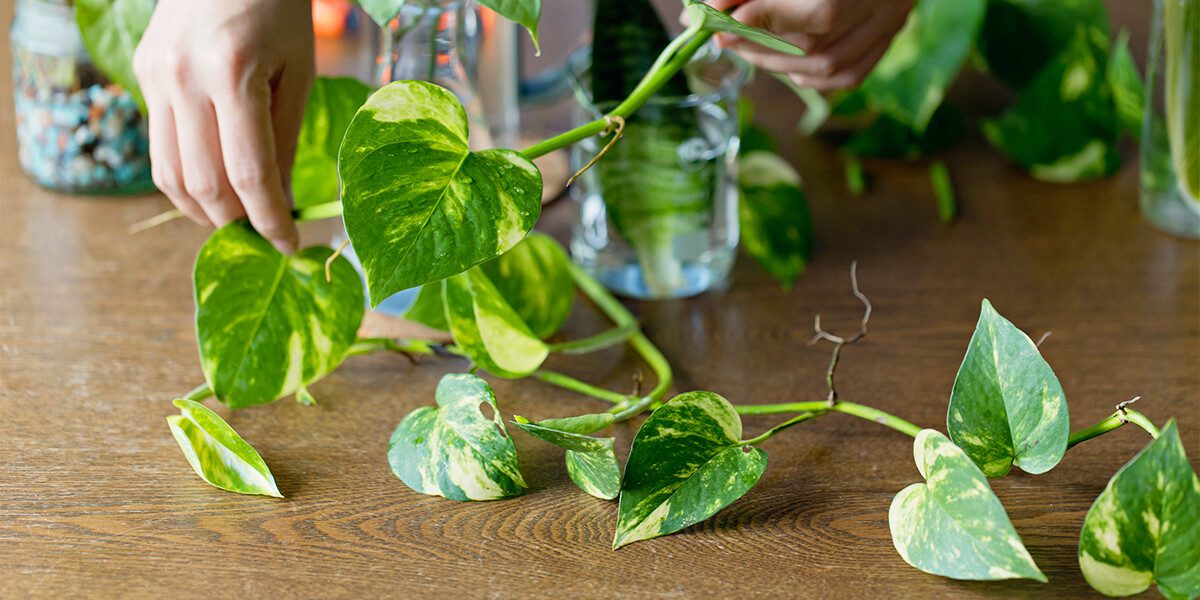
Propagating
With little more than a pair of scissors and a pot of fresh soil, you can be on your way to expanding your indoor garden. Many houseplants, like pothos and philodendron, are easily propagated from clippings. You simply clip off a branch with a few growth nodes, put it in soil, and it will grow new roots. Bromeliads send up new pups along the plant’s base, which you can divide and transfer to a pot of their own. African violets will root from a single leaf after you put the leaf stem in a jar of water for about two weeks. Many other indoor plants can also be reproduced by clippings or division.
Pruning
After a summer of growth, fall is the natural time to prune houseplants, but you can do it any time of year. A bit of shaping helps the plant look good and keeps it in the size that you want. It also rejuvenates the plant. Many plants respond well to pruning, even succulents like the Jade Plant. As a rule, you don’t want to remove more than one-third of the leaves at a time. Pinching away new shoots or pruning a plant at the top encourages a fuller, more compact shape around the base.
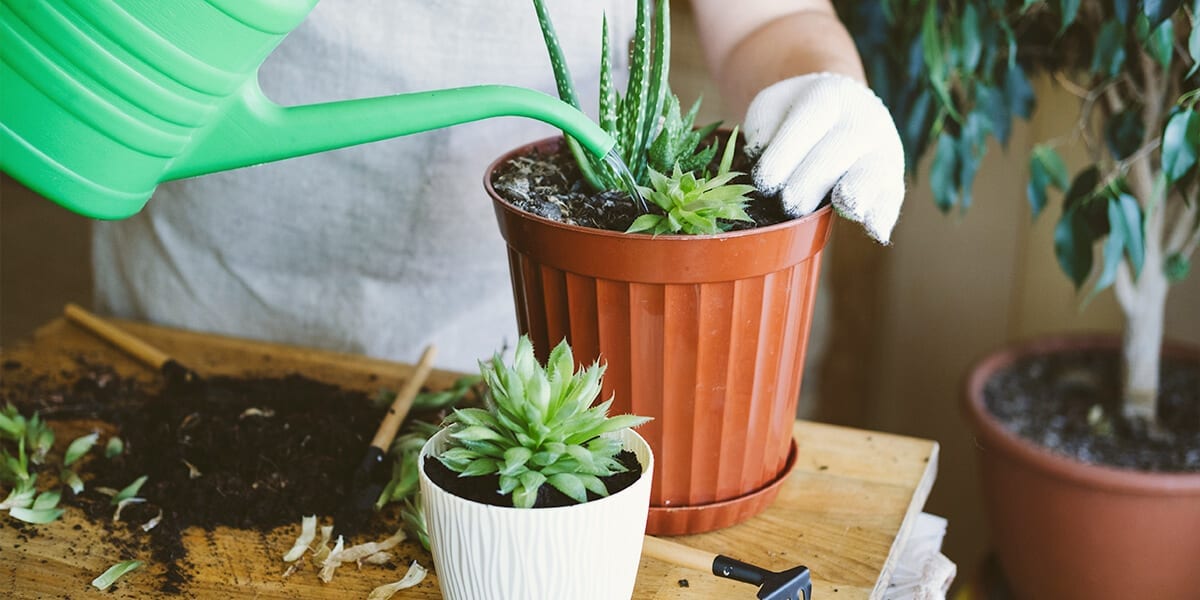
Advanced Watering Tips
You’d probably consider watering one of the basic tasks of indoor plant care, but a few tricks can help your plants get the right fluids they need.
- Unfiltered tap water often contains chlorine and/or fluorine that can damage the good microbes in the soil and inhibit a plant’s growth. Fortunately, it’s easy to remove them. Just fill the watering can, let it sit for 24 hours, and those compounds will evaporate.
- Water your plants will room-temperature water, as cold water can shock the roots.
- Water the plant until you see the excess liquid coming onto the saucer. Even plants that prefer less water like to be watered this way, just less frequently.
- With the exception of bromeliads, avoid watering the leaves. Instead, directly water the soil. Splashing dirt or water on the leaves can encourage fungal growth.
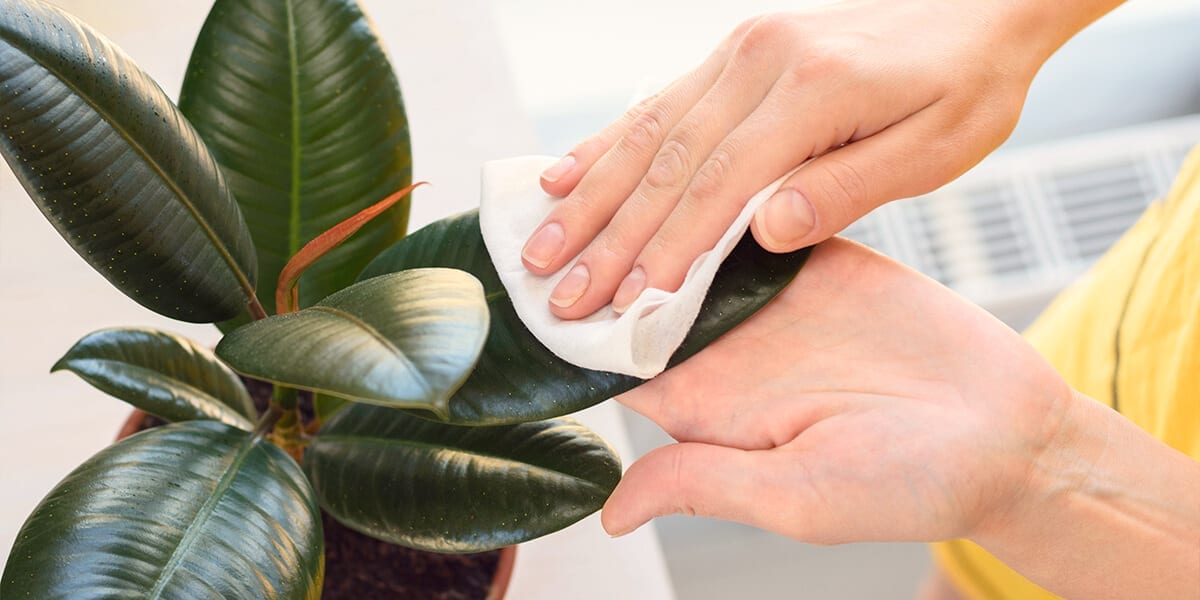
Dusting Your Houseplants
Indoor plants don’t have the benefit of rain or wind to clean their leaves. Like your furniture, they collect dust over time, which can clog the plant’s stomata—the holes where it breathes—and keep it from absorbing sunlight. Smooth-leaved plants may be dusted with a wet rag, whereas hairy-leaved plants should be dusted with a soft brush, as the hairs can trap water and encourage fungal growth.
Deadheading
You can encourage more blooms on indoor plants by deadheading spent flowers. This spares them the energy from forming seeds and redirects it back into new blossoms. Be mindful that some plants, like hoyas, form new flowers on the old flower stems.
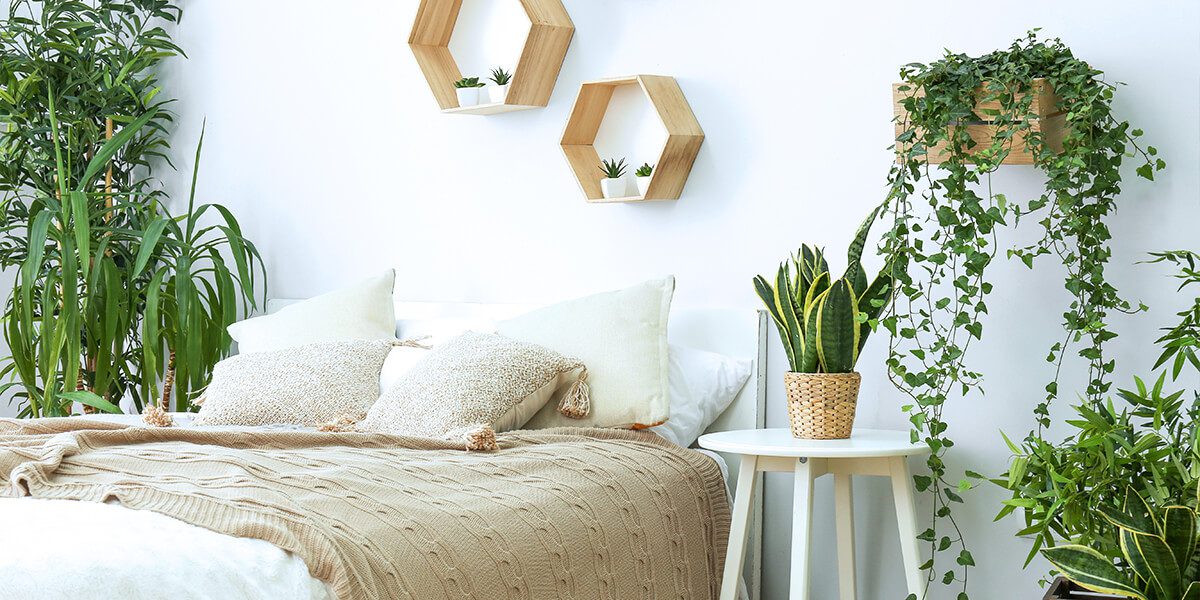
Beautiful Arrangements
At the end of the day, indoor plant care is as much of an art as a science. It’s not just about keeping the plants alive but of growing and arranging plants that will please you. Once you’ve mastered the basics, you can think about the beauty of your indoor garden. In fact, you don’t have to wait until you’ve mastered anything! You can start thinking about pleasing arrangements right away. They may include window shelving, artistic pots, hanging baskets, or miniature gardens.
A little advanced care can refresh your houseplants and make your indoor spaces more alive and beautiful. For extra tips on indoor plant care, feel free to ask the experts at our garden centers in Bloomingdale and Carpentersville. Also, remember to check out our guide to this year’s hottest houseplants.
Platt Hill Nursery is Chicago’s premier garden center and nursery.

